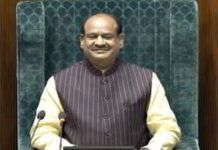A torrid crisis: On heatwaves in northern India
A prolonged summer should be classified as a natural disaster
Northern India has been bearing the brunt of the longest stretch of heatwaves in the last 15 years. The minimum day temperatures in some States have consistently remained above 45° C and those in the relatively cooler ones, at least 3°-6° C above what is usual for this time of the year. Even night temperatures have consistently been 3°-6° C above normal, a consequence of the near-absence of moisture and rain. To add to this, the monsoon has been sluggish. After an early start, the monsoon has stalled since June 12 and is stuck in central India. Before its onset over Kerala, the India Meteorological Department had forecast the rainfall in June over India to be ‘normal’. It has now updated that estimate to be ‘below normal’ or, in quantitative terms, a minimum 8% shortfall over the month’s expected quantum of 16.69 cm. This update, however, is not useful as it does not give an insight into the progress of the monsoon. The normal dates of the monsoon’s arrival over the northwestern and northern States are those spanning the June 25-July 1 timeframe. Whether the monsoon’s current hiatus will push these dates even further remains to be seen. A prolonged hiatus could mean an even greater load on the infrastructure in these States.
On June 17, the Power Ministry said that demand in northern India had surged to 89 GW (89,000 MW) — the highest in a single day. To meet this power requirement, nearly 25%-30% had to be “imported” from the other four regions — south, west, east and north-east — and possibly Bhutan. A precise break-up was not provided. Though the Ministry claimed credit in meeting the demand, it indirectly reveals the strain on the infrastructure. The installed power capacity in northern India is 113 GW (1,13,000 MW) and if the northern grid still needed to import power, it suggests an inability to utilise its full capacity. Delhi’s international airport had a half-hour blackout on the same day and it stands to reason that prolonged heatwaves and demands on cooling are only going to further strain the grid. Compounding this is the water crisis that has gripped Delhi. While water pilferage is a common woe, the heat has exacerbated demand, and Haryana, a key source of water for Delhi, has refused to increase supply citing its own constraints. It is high time that politics is set aside and the prolonged summer is holistically addressed by the Centre and States as a natural disaster.
















